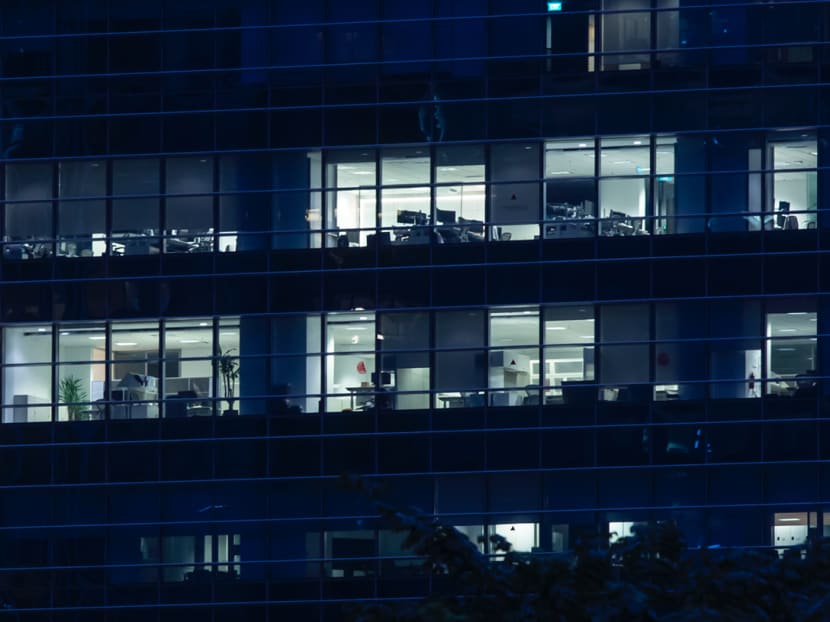Looking after workers’ mental health post-circuit breaker
The Covid-19 pandemic has redefined “office life”. For many, offices were a symbol of the never-ending rat race, while home was a place of solace.

For many, offices were a symbol of the never-ending rat race, while home was a place of solace, says the author.
The Covid-19 pandemic has redefined “office life”. For many, offices were a symbol of the never-ending rat race, while home was a place of solace.
The imposition of work-from-home arrangements has reversed that perception — the National Care Hotline received 6,600 calls in its first 19 days of operation in April from individuals struggling with anxiety, financial concerns and marital issues — all from the comfort of the home.
Returning to work — as some have done earlier this month under Phase One of resumption of business activities, with more to follow in Phase Two starting from June 19 — won’t take away these fears.
Not when Singapore is expected to face its worst recession ever and the fight against Covid-19 is a long-drawn one.
How can workplaces better motivate and support their employees during this challenging period?
There is no singular silver bullet that encapsulates the way that a workplace needs to be set up for a successful return to the work environment, because every workplace is going to be different.
What would be key though is the need for employers and bosses to take care of both employees’ physical and mental health.
In recent years, some employers have banded together to share learnings on employee-related mental health matters.
One example is the WorkWell Leaders Workgroup, a volunteer-run initiative made up of leaders from various companies.
It has published a Workplace Wellness e-guide to tackle specific issues such as maintaining team dynamics in a split team arrangement, addressing unconscious bias during remote working and drawing clear work boundaries at home.
Suggested measures included creating digital gratitude walls or appreciation platforms, supporting colleagues who are speaking up against biased behaviour and seeking professional help if anxiety persists.
In the coming months, whilst employees start heading back to the office, there may be some who choose to continue telecommuting for health or family reasons.
Companies will need to take their mental health needs into consideration as well, such as being plagued by the “out of sight, out of mind” syndrome where they assume they will be more easily overlooked by the bosses compared to their colleagues in the office.
This is where regular and timely check-ins by managers are vital. Additionally, some may feel a sense of alienation from not being able to interact with their colleagues in person.
Organising virtual bonding activities like workout sessions or games day has been found to be impactful in strengthening social connections.
In my company, Jardine Cycle & Carriage, and our subsidiary Cycle & Carriage Singapore, we ran a weekly series of activities, including quizzes and competitions such as cook-offs, to stay connected with our colleagues.
Recognising that some employees might be feeling the strain of social isolation, we also organised a company-wide virtual steps challenge to raise funds for charity.
Whether employees are heading back to the office and the larger community, or working from home, organisations have to be active and deliberate in continuing to engage employees.
Companies must cultivate a culture of acceptance of colleagues who may require more support in the area of mental health challenges in the workplace, such as providing access to human resource or panel counsellors.
In this regard, human resource personnel and direct line managers need to recognise the various means that can support employees’ mental health such as employee wellness programmes, allowing time off for those who need mental health breaks and connecting employees to appropriate community resources.
Colleagues can also be a valuable source of support in the mental health area to help ease the anxieties of fellow co-workers.
One may ask if the provision of the above will add to the already burgeoning stress that business owners are facing and make their challenges even greater.
The response is a simple and powerful one: It does not take much to provide a listening ear or to offer a word of encouragement or just be kind to a fellow human being.
As for a formal infrastructure, there are support resources that companies can tap, such as well-established counselling hotlines and services by organisations like Touch Community Services Care Line and the Samaritans of Singapore.
The changes described require a mindset shift and a new approach by employers and companies. But then again, this pandemic is novel and no ordinary crisis.
It offers employers an opportunity to establish a more robust workplace infrastructure that caters to and supports an important aspect of a thriving workforce — the mental health and wellbeing of its employees.
ABOUT THE AUTHOR:
Jeffery Tan is chief executive officer of Mindset, a registered charity of Jardine Matheson in Singapore. He has been group general counsel and director of legal and corporate affairs at Jardine Cycle & Carriage since April 2016.






